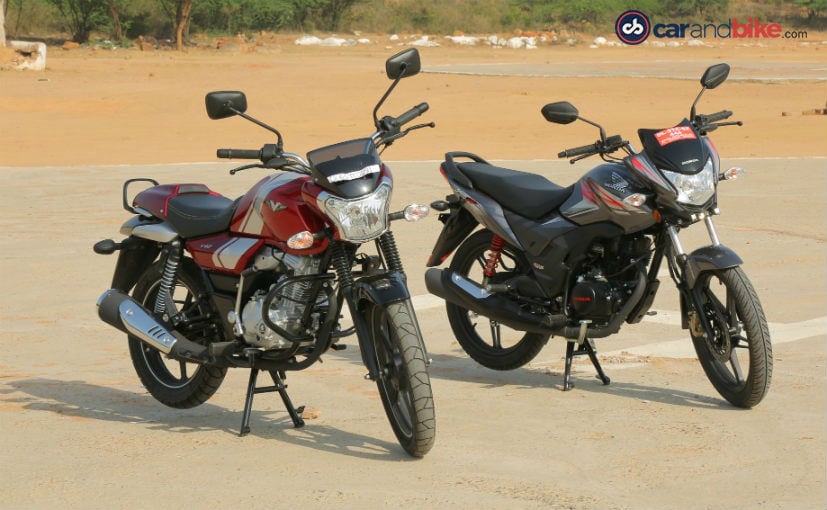
The Bajaj V12 is the newest motorcycle in the mass market 125 cc commuter motorcycle segment. It is the latest addition to Bajaj’s popular V series of motorcycles too; well, with two motorcycles under the V brand, we can finally say it’s a series of motorcycles now. The V brand has been instrumental in pushing Bajaj’s sales numbers over the past year, with the 150 cc Bajaj V15 becoming a sort of runaway hit in the market. People warmed up to its looks, torquey engine and meaty exhaust note.
The fact that the ‘V’ was named such since it has a small amount of metal from the scrapped aircraft carrier, INS Vikrant, made things even better for the marketing folks at Bajaj. So, the V15, which Bajaj also promoted as a 150 cc motorcycle at the price of a 125 cc bike, set the sales numbers zooming and the cash registers ringing at Bajaj dealerships. It was only natural that the next obvious product would be to extend the V series and launch a downsized 125 cc with the same heritage brand marketing and butch looks which people seem to have warmed up to. So, enter the V12, a downsized version of the V15 with similar design.

(Bajaj V12 gets quirky design, but looks muscular)
The V12 is Bajaj’s attempt to grab a slice of the 125 cc commuter motorcycle market; it’s a segment which sees overall monthly sales of nearly 1.5 lakh motorcycles. That’s a lot of numbers and a 15-20 per cent share of this segment means good volumes and good business for Bajaj. Problem is, more than half of that overall sales number belongs to Honda Motorcycle and Scooter India, courtesy the Honda CB Shine and the Honda CB Shine SP. It’s the undisputed leader in the 125 cc market, and if Bajaj was to target a significant share of this market, it is to wean away prospective buyers from being taken in by the small Honda’s charm. We spend some time with both bikes to see if the Bajaj V12 has what it takes to take the fight to the Honda CB Shine SP.
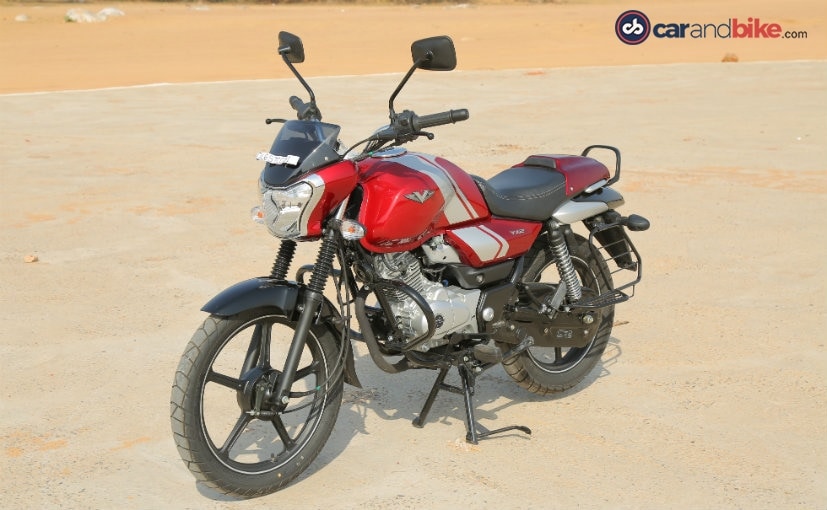
(Bajaj V12 gets a fat fuel tank, odd headlight)
Looks and Design
Looks are subjective, and what appeals to many may not appeal to some, and vice versa. And this is true particularly for a motorcycle design which the V15, and now the V12 carry. Overall, the V12’s design is identical to the V15 and you could be easily fooled into confusion between the two. The changes are subtle – new decals running straight down from the fuel tank to the side panel, new single, five-spoke alloy wheels, slimmer tyres and the lack of a front disc brake. But that fat fuel tank and quirky headlight design remain. In fact, the fat fuel tank makes the V12 look bigger than it actually is.
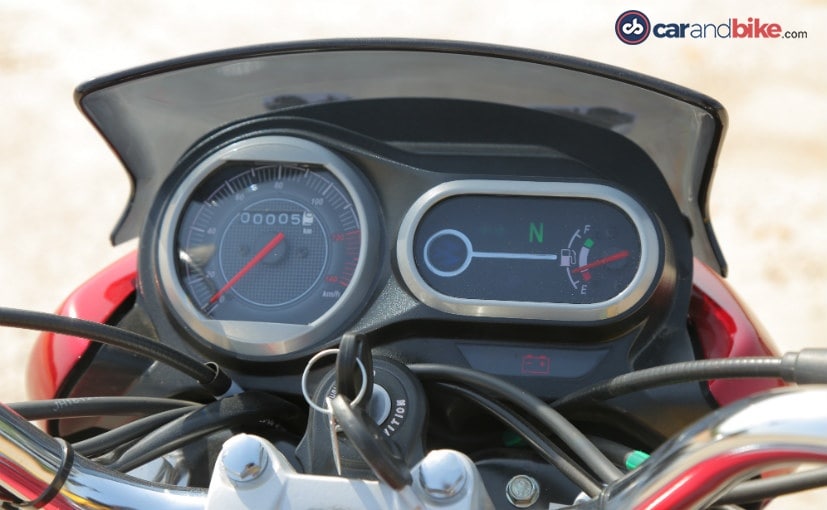
(Bajaj V12 instrument console)
Switchgear is good quality on both bikes, and with the government safety regulations kicking in from 1 April 2017, both bikes lose out on a headlight switch, with the anytime-on headlight function. Of course, there’s low beam, high beam and the accompanying basic indicator switches. In terms of instrumentation, the Bajaj V12 gets a basic analogue speedometer/odometer with a fuel gauge and tell-tale lights. It’s a simple unit, easy to read, and underlines the V12’s mass market lineage.
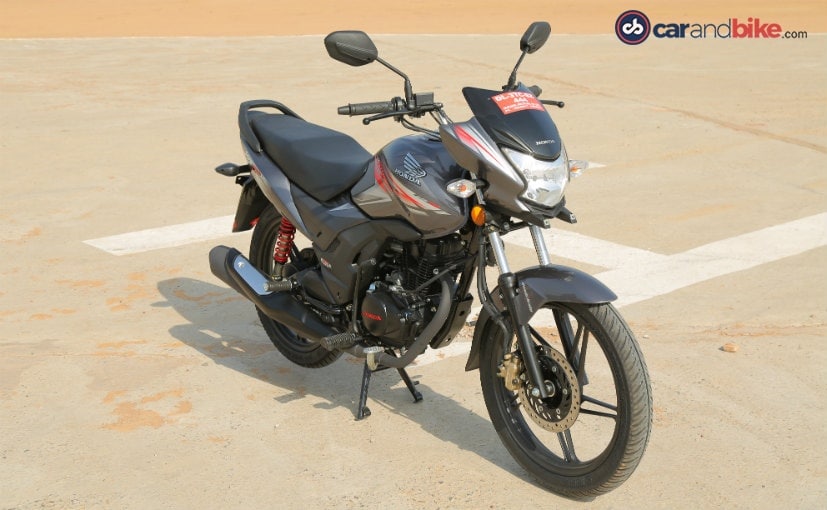
(Honda CB Shine SP looks stylish)
In comparison, the Honda CB Shine’s design is quite conventional, and understated. It doesn’t shout out “look at me” but that is also the Honda’s largest strength. It looks stylish, without having a over-the-top design and fit and finish on the Honda are excellent. The Honda CB Shine SP also has a more modern instrument panel, comprising an analogue speedometer and a digital read-out for fuel gauge, odometer and trip meter. It certainly looks more contemporary, easy to read, and the digital read-out adds a ‘premium’ touch to the cockpit.
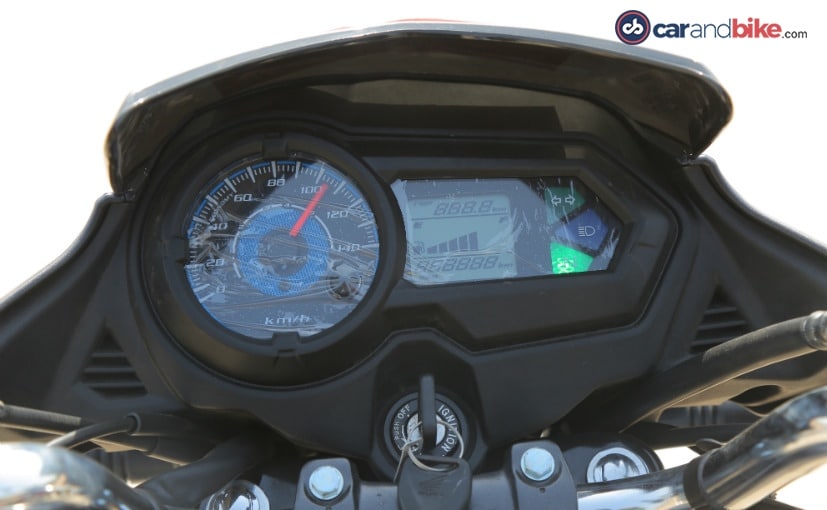
Honda CB Shine SP instrument console
The Honda’s strength though lies in very good build quality and overall fit and finish. That’s not to say that the Bajaj is lacking in any way, but look at both bikes side by side and it’s apparent which one looks and feels more premium. So, despite the “unique” design language of the V12, this round certainly goes to the Honda CB Shine SP.
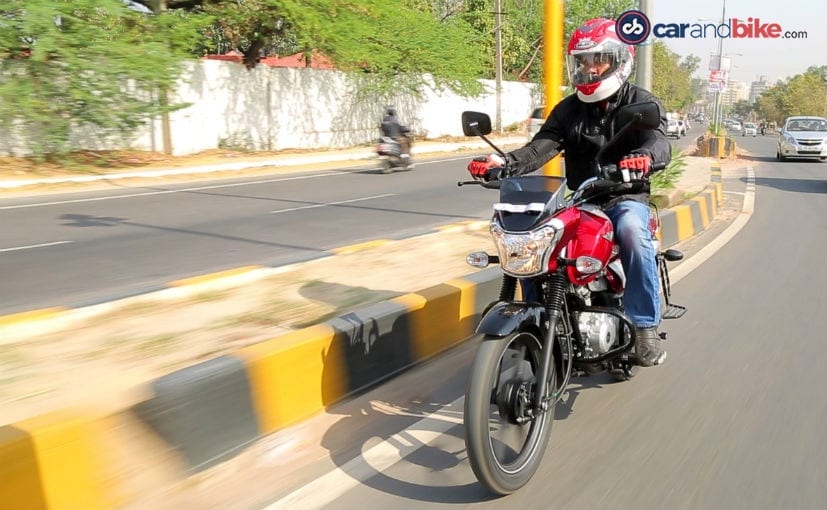
(Bajaj V12 has torquey engine)
Performance and Handling
On the road, there’s nothing to find fault with the Bajaj V12. Yes, the riding position and the way you sit on the bike with the handlebar spread out forward takes some getting used to. It isn’t conventional, but not so uncomfortable either. The gears are short spaced and the torquey engine is suitably complemented by the meaty exhaust note. The engine is a single-cylinder, air-cooled 125 cc unit, which makes 10.5 bhp at 7500 rpm and 10.9 Nm of torque at 5500 rpm.

(Bajaj V12 gets 125 cc engine with 10.5 bhp)
The torque is strong in the low and mid-range and is quite helpful when you are negotiating traffic. Fifth gear is good to potter around town at around 40 kmph and you don’t need to change gears that often. Acceleration is decent for this class and the V12 reaches 70 kmph quite effortlessly. But if your commute a substantial highway bit, or you are the kind of occasional highway rider, then the engine feels a little strained after 80 kmph.

(Honda CB Shine SP gets five-speed gearbox)
The Honda CB Shine SP shares the same engine as the Honda CB Shine, but gets an extra fifth gear in the SP version. The engine is a single-cylinder, air-cooled 125 cc unit making 10 bhp at 7500 rpm and 10.3 Nm at 5500 rpm. On paper, the numbers are evenly matched, but in the real world, there is some difference. Compared to the meaty bass note of the Bajaj V12, the Honda CB Shine SP’s sound is muted, and the first thing you notice is the silky refinement of the engine. Ride quality is quite good over city streets and handling is neutral and predictable, unlike the V12 which surprised me on the first leaned out corner with unexpected over eagerness. The fifth cog on the CB Shine SP (the CB Shine has a four-speed gearbox) also helps maintain highway speeds effortlessly.
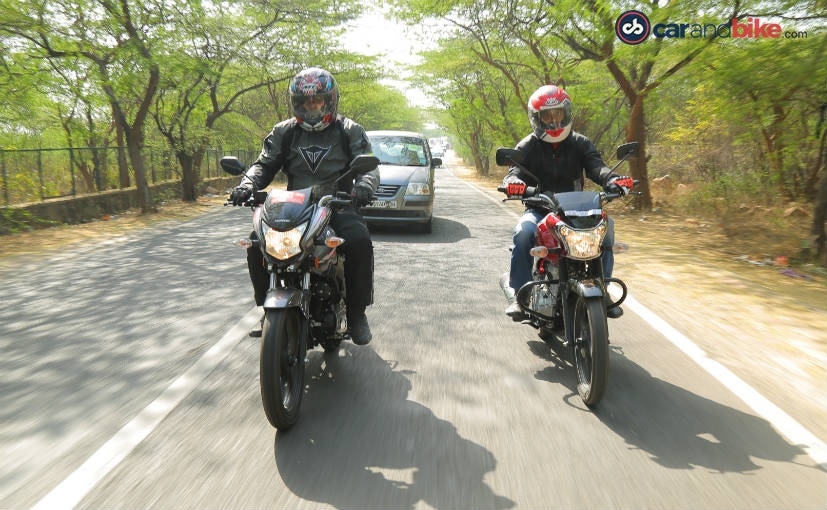
(Honda CB Shine SP offers nimble handling, refined engine)
The drum brakes offered on the V12 are adequate, but in this day and age, they feel rubbery and ancient compared to a disc brake, and this is where the Honda CB Shine SP scores as well. Factor in the Combined Braking System (CBS) on higher variants of the CB Shine SP, like the one we are riding, and there’s no contest really on braking performance.
Verdict
The Bajaj V12 is a well thought out, well marketed product, offering a unique proposition in the crowded mass market commuter motorcycle space. In fact, just the V12’s quirky looks and that bassy exhaust note would probably be two main reasons which draw in potential customers. Great in-town performance, decent fuel consumption (Bajaj claims real world fuel efficiency of between 50-55 kmpl) word of mouth publicity will certainly help the V12’s case, and no doubt we will see the evidence of these traits as the bike gains more traction in the market. For now, it’s available in just one drum brake variant and that is priced attractively at Rs 57,003 (ex-showroom Delhi).
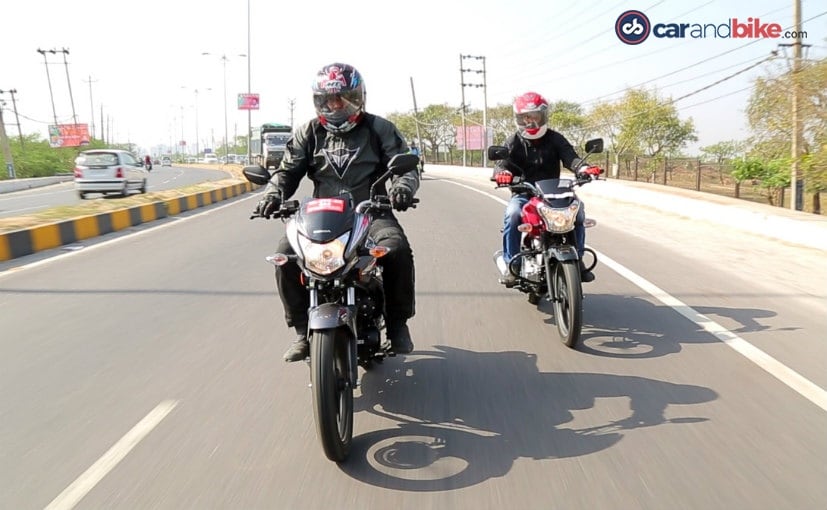
(Honda CB Shine SP gets our vote as the winner)
The Honda CB Shine SP may be the expensive proposition in this comparison if you look at the top of the line CBS variant we are riding, which costs Rs 65,414 (ex-showroom Delhi). At the same time, the Honda offers as many as six different variants, but the base variant still costs a good Rs 3,000 more than the Bajaj V12. However, if you’re really on a tight budget then the base CB Shine (with the four-speed gearbox) offers an even more attractive option than the V12, at Rs 55,799 (ex-showroom Delhi). Of course, you lose the refined high speed performance of the five-speed version, but you get everything else you would appreciate in the Honda. Honda claims fuel efficiency figures of 65 kmpl, and you can certainly expect upwards of 50 kmpl in the real world. It’s a close finish – the Bajaj V12 offers a completely “different” product with a slice of history in its name and the Honda CB Shine SP offers a practical performer with established credentials. You can certainly choose either of the two if you’re in the market for a 125 cc motorcycle. But a shootout is a shootout and there has to be a clear winner, and in this comparison, overall the Honda still gets our vote as the best 125 cc motorcycle currently on sale.
[“source-ndtv”]




